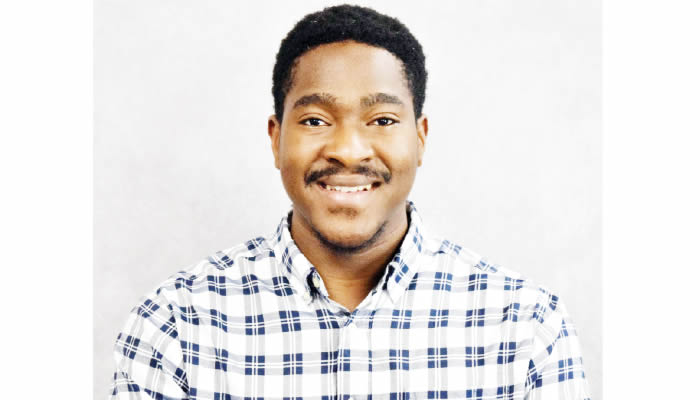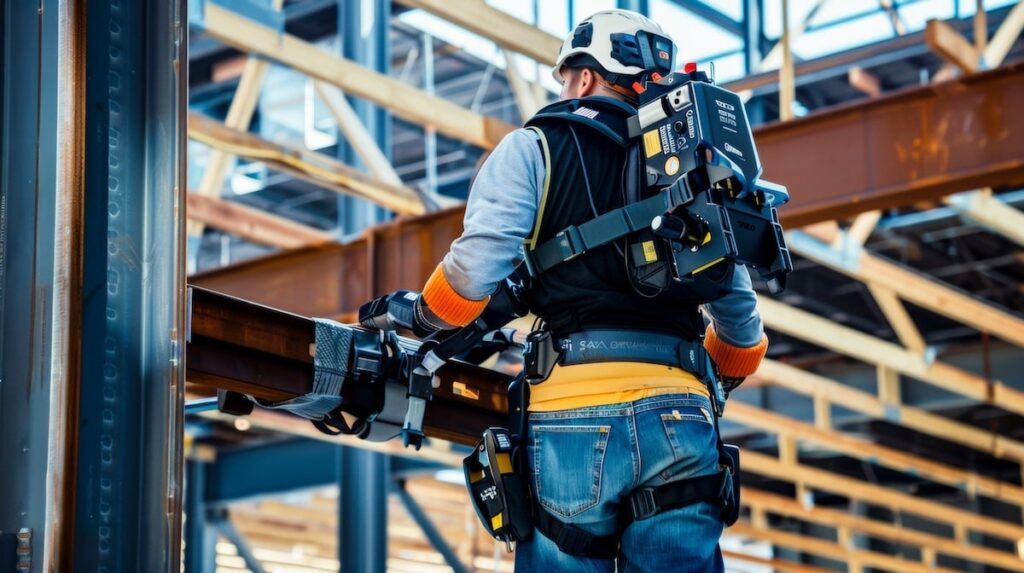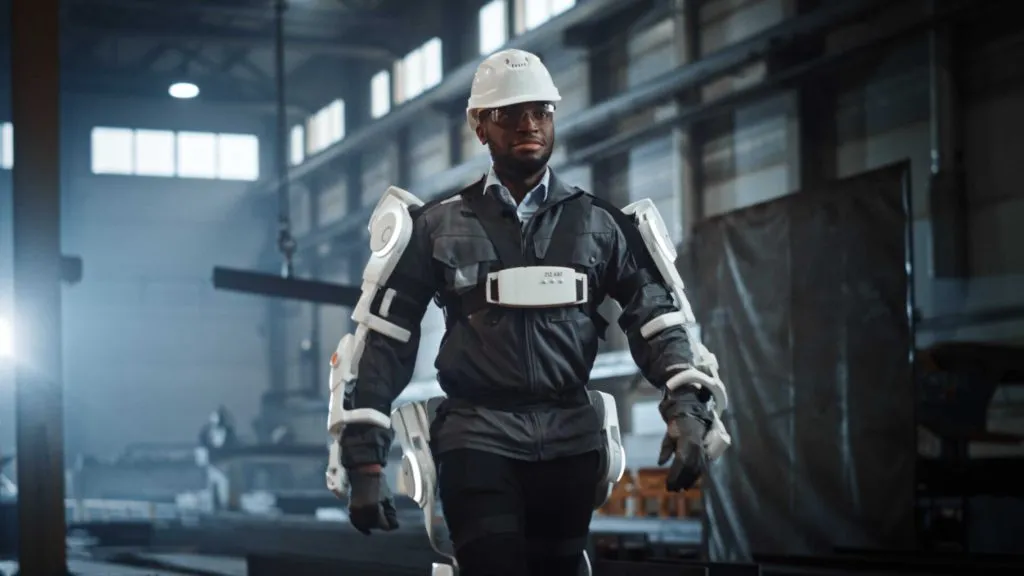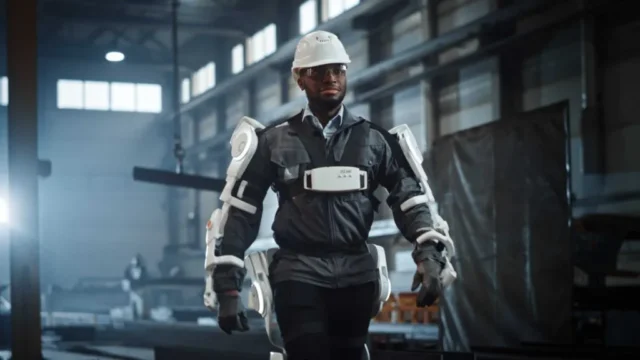In Nigeria’s fast-growing construction industry, the buzz of heavy machinery and the shouts of site workers are familiar sounds. But behind the industry’s visible progress lies a troubling statistic — the high rate of occupational fatalities. Now, a Nigerian-born civil engineering Ph.D. researcher at Clemson University in the United States, Kehinde Elelu, believes the answer to safer worksites may lie in an unexpected source: audio-based wearable technology.
Speaking with TEMITOPE AINA, Elelu explained how low-cost wearable devices, powered by machine learning, could transform site safety in developing countries like Nigeria — and why policymakers, contractors, and universities must work together to make it happen.
Table of Contents

Why Wearables Matter in Nigerian Construction Safety
For years, the Nigerian construction sector has struggled with inconsistent enforcement of safety regulations, limited resources, and a workforce dominated by small- to medium-sized contractors. These realities make high-tech safety upgrades seem out of reach. But Elelu insists that wearable devices — specifically audio-based ones — could change that narrative.
“These innovations can detect the presence and movement of heavy machinery in noisy construction sites,” he said. “They provide real-time alerts to workers, enhancing situational awareness and preventing accidents without the need for expensive infrastructure upgrades.”
By relying on sound detection rather than costly retrofitted sensors, the technology becomes affordable and scalable — a game-changer for small contractors who make up most of Nigeria’s construction market.
How It Works
Elelu’s research focuses on wearable devices equipped with machine learning models that listen to the environment. They can identify the unique audio signatures of moving equipment and send immediate alerts to workers — even those wearing hearing protection.
The goal is simple but life-saving: reduce human-equipment collisions and improve awareness in chaotic work environments. “It’s about giving workers a first line of defence,” he explained.
Because the devices do not require major equipment modifications, contractors can adopt them without overhauling existing operations — an important advantage in cost-sensitive markets.
AI and Smart Sensors: Closing the Safety Gap
Beyond wearables, Elelu sees huge potential in combining artificial intelligence (AI) and smart sensors for broader safety improvements.
From analysing vibration patterns to detecting abnormal noise or heat signatures, AI-driven devices can spot hazards early and trigger preventive measures. In African contexts, where human supervision can be inconsistent, these tools also serve as “digital supervisors” — providing compliance records, reducing manpower burdens, and improving safety in remote or decentralised projects.
Technology as an Enforcer
One of the biggest hurdles in Nigerian construction safety is not just the absence of rules — but the inconsistent application of them. Technology, Elelu believes, can fix this.
“Wearable devices can log safety violations, near misses, and response times, providing verifiable data for regulators,” he said. These digital records could help in investigations, certify contractor safety ratings, and reduce reliance on overworked site managers.
In other words, enforcement becomes built in, rather than reactive.

Influencing Policy Through Research
Elelu hopes his work will give Nigerian policymakers the evidence they need to make wearables a requirement for public infrastructure projects.
“Affordable, scalable technologies can significantly improve safety outcomes,” he said. “If field experiments show success, governments could mandate or incentivise their use in state-funded projects.”
He also advocates for prioritising locally developed innovations — a move that would not only improve safety but also boost Nigeria’s tech ecosystem.
From Campus to Construction Site
One striking part of Elelu’s approach is his insistence that academic research must leave the lab. “We need to move from theory to field application,” he said. That means involving students and researchers in real-world testing, working directly with contractors, and refining innovations based on actual site conditions.
Universities, he argues, should embed applied research in their engineering and technology programmes — training students not just to design systems, but to turn them into market-ready products.
Scaling Safety Solutions in Low-Resource Settings
When budgets are tight, Elelu believes localisation is key. His audio-based wearables use widely available sensors and inexpensive processing units, slashing costs compared to high-end imports.
Governments could accelerate adoption through bulk procurement, tax incentives, and integration of such tools into public works requirements. Open-source software and local fabrication could further reduce prices, while also ensuring the technology is tailored to Nigerian conditions.
Building Local Capacity
To reduce reliance on imported tools and expertise, Elelu says Nigeria must invest in talent, infrastructure, and innovation ecosystems. That includes revamping engineering curricula to cover IoT, AI, and robotics; funding research on local safety challenges; and creating interdisciplinary construction technology labs.
He also calls for closer ties between industry and academia, offering internships, hackathons, and competitions to produce a new generation of homegrown innovators.
A Framework for the Future
Elelu proposes a three-step plan for integrating smart safety systems into Nigeria’s urban development strategies:
- Policy Integration — Update building codes and labour laws to require digital safety systems.
- Pilot Projects — Test wearable and IoT solutions on flagship infrastructure projects before scaling.
- Public-Private Partnerships — Create innovation hubs and support startups working on safety technology.
Disaster Risk Reduction Through Sound
Audio-based sensing, Elelu explains, can detect dangerous conditions like equipment failures or structural instability faster than visual checks. Because sound travels in all directions, it allows for early warnings even without line of sight.
When integrated into national disaster preparedness plans, this technology could save lives not just in construction, but in other high-risk sectors.
Reforming Engineering Education
For Nigeria to produce more problem-solving innovations, Elelu says engineering programmes must emphasise entrepreneurship, design thinking, and real-world testing. Accreditation should reward schools whose projects make measurable impacts.
Funding should prioritise solutions with clear implementation pathways, while balancing international partnerships with a focus on local challenges.
The Role of Startups
Local startups, Elelu believes, are best placed to tailor safety innovations to Nigeria’s unique realities. “They can prototype, test, and scale much faster,” he said. With the right regulatory support, funding, and access to public contracts, these businesses could lead the charge in modernising safety practices.

Data as the New Safety Net
Real-time data from wearables and IoT systems could reveal patterns of unsafe behaviour, guide targeted training, and benchmark safety performance. Even in low-regulation environments, such insights could push contractors to self-regulate.
Designing for the Informal Sector
Since much of Nigeria’s construction workforce is informal, Elelu says safety tech must be affordable, durable, and easy to use — even offline. Local languages, intuitive interfaces, and community-based training could ensure adoption at the grassroots level.
The Bigger Picture
For Elelu, wearable audio-based technology is not just a gadget — it’s part of a larger vision where Nigerian innovation meets urgent safety needs. If adopted widely, such tools could reduce deaths, improve compliance, and give workers the confidence that they will go home safely at the end of the day.
“This is about protecting lives,” he said. “And if we can do it affordably and at scale, then there’s no excuse not to.”
Join Our Social Media Channels:
WhatsApp: NaijaEyes
Facebook: NaijaEyes
Twitter: NaijaEyes
Instagram: NaijaEyes
TikTok: NaijaEyes







































